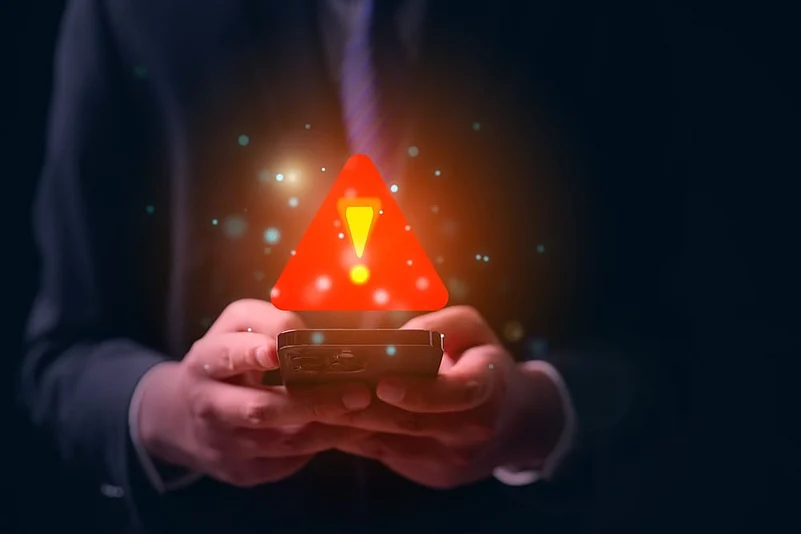Pawan Sharma (name changed), 68, received a call last month for an URGENT updation of his electricity bill. Received from a regular 10-digit number, the person on the line told Pawan some parts of his previous bills were unmet and that his house would face an ‘instant electricity cut’ if the due were not paid then and there. Scared, and in a moment of urgency, Pawan ended up losing Rs 60,000 to an electricity bill payment fraud. Earlier in March, a 99-year-old resident of Juhu, Mumbai was duped of Rs 2.78 lakh to the ‘unpaid electricity bill’ fraud.
These two cases are a part of malicious ongoing cyber fraud, wherein scammers target many victims across different age groups. It seems their first targets are senior citizens, among others. With the help of the Chakshu portal’s AI-driven analysis, the Department of Telecommunications (DoT) on Monday revealed that 392 handsets linked to 31,740 mobile numbers were involved in such fraudulent cases.
The DoT, on 17 June 2024, ordered a pan India IMEI-based blocking of these mobile handsets in an official release to all Telecom Service Providers (TSPs).
Common Tactics Of Scammers:
Urgency: Knowing that common people easily fall into the fear induced by urgency, cybercriminals will always try to trap you with this tactic. Such as, in Pawan’s case they threatened him with an electricity cut if he did not pay the unmet dues.
OTP Notifications: Because they are already either messaging or calling you on your number, the scammers send OTP to make you believe that they are not frauds. It is with such OTP clearance, and pan details (as in the cases of Pawan and Juhu victims) that scammers can skim money from your accounts.
Spot these warning signs
The best way to prevent falling into these scams is to know the warning signs. The best tactic in scammers' bag is to scare and thread you into the urgency of a fake situation. Following are a few ways to know when the message/call is a fraud:
Regular Numbers: Official communication from concerned departments comes from authentic channels, and places not regular numbers. Make sure it's from a reliable and official source. If the person calls you, be sure that the official department will never ask you to make any urgent payment or threaten you with a complete electricity cut.
Full Of Mistakes: Before you make any payment or click on any fishy link, check the number, wording, and pattern of the message. Fraud messages often have lots of mistakes. If a message doesn't look right or contains lots of spelling errors, it's probably a fraud. Official messages contain proper grammar and language, without any major errors.
Check Your Dues: Always make sure to confirm your bills by talking directly to your electricity company. Don't just trust text messages, especially if they're urgent. Direct confirmation ensures the information's authenticity.
Nitin Pandey, a National Cybersecurity Expert suggests the following preventive measures people should follow:
1. Always follow the 'Zero Trust Policy, Pause and Verify' for all digital transactions and messages from unknown people.
2. Victims should stay calm and question the truth of the situation. Genuine legal issues are typically resolved through official channels, not sudden actions.
3. They should check any claims by contacting concerned officials/departments, a cyber helpline, or their lawyer before responding or taking any actions based on the instructions of scammers.
4. Never click on links, scan QR codes, or install (APK) apps from messages or emails sent by strangers.
5. Never share personal sensitive information like your Aadhaar or PAN details, or your bank account or credit/debit card information.
6. Be cautious of demands for money transfers over the phone or the Internet, threats of urgent legal action, and unusual payment requests from strangers. These are tell-tale signs of a scam.
To report a case of fraud, visit the Sanchaar Saathi website for information (sancharsaathi.gov.in/sfc/). Go to the option of 'Chakshu-Report Suspected Fraud Communications' option on the Department of Transportation's Sanchar Saathi site. This assists the DoT in combatting and preventing cybercrime and financial fraud.
In case you’ve already lost money due to financial fraud or are a victim of cybercrime, report your case at the official cyber crime helpline number (1930) or visit this website - www.cybercrime.gov.in. Please note that the ‘Chakshu’ facility does not handle financial fraud or cyber-crime cases.















